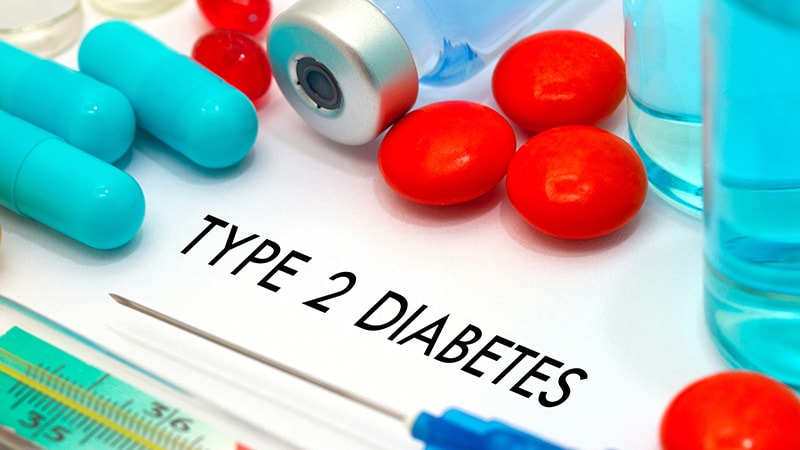Diabetes is becoming more common all over the world. Diabetes affected an estimated 347 million individuals in 2012, and this figure is anticipated to rise to 592 million by 2035. Type 2 diabetes accounts for around 90% of all instances and can result in major long-term health consequences such as heart and kidney disease, stroke, and blindness. Hyperglycemia is a symptom of diabetes mellitus, which is caused by abnormalities in insulin secretion, insulin action, or both. The pancreas continues to generate insulin in type 2 diabetes, but either not enough or the body is unable to properly use the insulin it does create.
Symptoms of Type 2 Diabetes
Frequent thirst is one of the symptoms of type 2 diabetes. Urination is frequent. An unknown cause of weight loss. Unexplained exhaustion. Wounds that do not heal. Changes in vision, such as blurred vision. Sores or infections that take a long time to heal, such as bladder infections and skin illnesses (including fungal).
The causes of Type 2 diabetes
Although there are numerous probable triggers for Type 2 diabetes, such as genetics, age, and lifestyle, an in-depth investigation of the factors indicated that weight is still by far the biggest cause. If the disorder is not treated, it can lead to major health issues like heart disease, kidney failure, blindness, and stroke. Diabetics may have a higher chance of acquiring the renal disease. Kidney disease can be exacerbated by diabetes, high blood pressure (hypertension), and obesity. Kidney disease affects almost half of all diabetics.
The difference between type 1 and type 2 diabetes
There are two types of diabetes. Diabetes type 1 is typically diagnosed in childhood or young adults. It is an autoimmune illness, which means that the body’s immune system assaults and destroys healthy cells in the pancreas that make insulin by mistake. Type 2 diabetes develops when your body’s ability to produce insulin is compromised, or when cells become resistant to its effects. Type 2 diabetes can develop at any age, unlike type 1 diabetes, which is commonly diagnosed in childhood or adolescence.
Prevention and treatment of type 2 diabetes
It is estimated that more than 1,200 people contract diabetes every day. Globally, the number of people living with diabetes has almost quadrupled since 1970 to 422 million in 2014. This means that one out of every 11 people worldwide live with diabetes and this figure is expected to rise further still. Most of these patients are overweight or obese and have an unhealthy lifestyle, with diets high in fat and sugar content. Treatment for T2DM includes diet therapy, physical activity, exercise programs, and pharmacotherapy. Type 2 diabetes is a serious disease that can lead to major health issues, including cardiovascular disease. However, there are ways to prevent type 2 diabetes from developing in the first place.
1) Keep a healthy weight
2) Engage in regular exercise.
3) Consume a well-balanced diet low in fat and sugar.
4) Limit your alcohol consumption to one drink per day for women and two drinks per day for men.
5) Relieve stress by using meditation or other relaxation techniques.
Insulin and what it does
Insulin is used to treat type 2 diabetes, although it may also be used to treat other medical disorders. The body naturally generates insulin, and unless you have type 1 diabetes, your body automatically regulates the quantity of insulin released by your pancreas. How does insulin function? When you eat food, particularly carbohydrates, your body converts it to sugar. This sugar is carried by your blood to all of your cells in your body, where it is consumed for energy or stored for later use. However, when there is more sugar in the blood than can be utilized immediately.
Foods that help control blood sugar levels
The best foods for lowering blood sugar levels are those rich in fiber, which slows the absorption of sugars and starches into your bloodstream. Whole grains, legumes, nuts and seeds, fruits and vegetables are examples. Certain meals can lower blood sugar levels in the body. In fact, some of these foods are very rich in fiber and nutrients. Some of the best foods for lowering blood sugar levels are garlic and onions. Garlic lowers blood sugar by preventing liver cells from absorbing glucose into the bloodstream. It is more effective than some commercial drugs used to treat diabetes mellitus Type 2.
Foods that cause blood sugar levels to rise
Whether you have diabetes or are just trying to eat healthily, it’s worth knowing which foods will raise your blood sugar levels. Each of the following foods can increase your blood glucose significantly. So, if you have diabetes or are at risk of developing it, try to avoid any of these blood sugar-raising foods. Some of the foods are potatoes, rice, wheat bread, bagels, corn flakes, and skim milk. Some other things to avoid include:
1. Alcoholic Drinks: Alcoholic drinks should be avoided at all costs, as they have a high glycemic index and will raise blood sugar levels rapidly.
2. Foods high in simple sugars, such as desserts, candies, syrups, soft drinks, juices, and so on…
3. Refined grains: Foods made from refined grains, such as white rice and pasta, should be avoided because they quickly convert to glucose in the body.
In conclusion
This guide is a good starting point for anyone who would like to learn more about the disease. It covers everything you need to know about type 2 diabetes, from causes and symptoms to treatment options. There are several ways to control your blood glucose levels and ward off diabetes-related complications. You must take steps to monitor your blood sugar, maintain a healthy diet, and exercise regularly. With that being said, there are several factors that can contribute to Type 2 diabetes. The most common risk factor for type 2 diabetes is obesity, but the disease can also be caused by physical inactivity and genetic predisposition. If you are overweight or obese, it’s important to visit your doctor for an assessment. You’ll learn if you have prediabetes or diabetes and what steps you need to take to prevent the onset of complications associated with these diseases.








